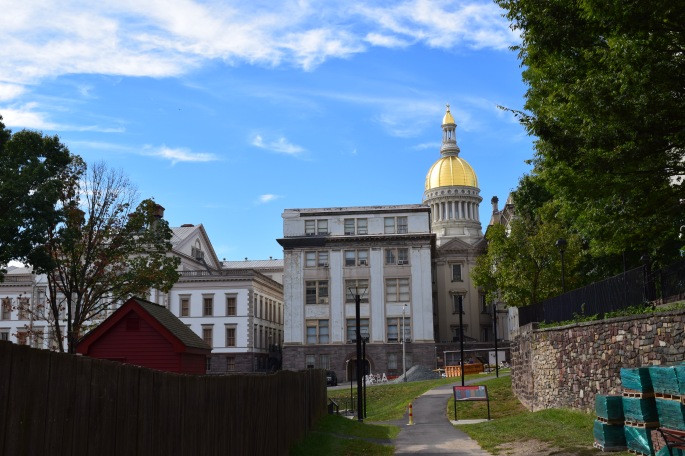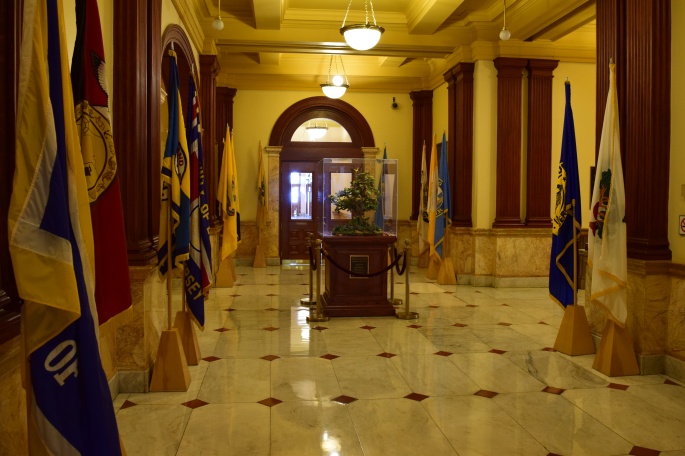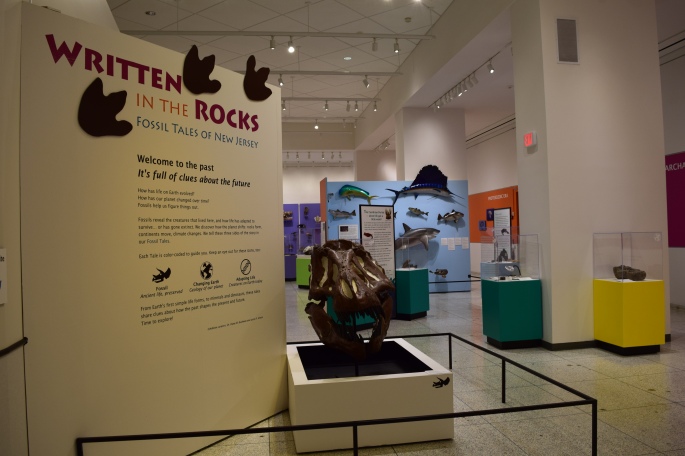State capitals. Most people usually get confused when they have to name them, myself included. Why isn’t New York City the capital of New York? For California, why was Sacramento chosen over Los Angeles and San Francisco? The same could be said for Illinois, choosing the capital Springfield, rather than Chicago. There are many examples of this “capital paradox” around the state. One of these cases is with New Jersey.
The capital of New Jersey is not Newark, Jersey City, Elizabeth, nor Paterson. The capital lies in Trenton, a city in Mercer County that lies next to Princeton and the Delaware River. In the last blog post, I discussed New Jersey geography, in which I only briefly discussed the state’s counties. For further reference, you can click here.
In today’s post, I will be highlighting a couple of interesting places that Central Jersey’s Trenton has to offer. However, first I will be covering some of its history.
The area containing Trenton was initially settled by Quakers in the late 1600’s, who like many early colonists were fleeing religious persecution in England. Eventually, the land was purchased and named after a successful trader of the time, William Trent.
The town became an important early settlement in the colony, as it was a major trading hub close to Philadelphia, both of which sit on the Delaware River. Trenton was also integral in the beginning of the United States.
The Battle of Trenton was a small yet important conflict in the Revolutionary War. It was for this battle that George Washington made his famous crossing over the Delaware River during the winter. This greatly surprised British forces, which in Trenton were mostly German mercenaries known as the Hessians. The continental army won the battle, raising morale for the fighting colonies who at this point were struggling against Great Britain. About a week later, the British counterattack at the Second Battle of Trenton also resulted in an American victory.

Due to Trenton’s importance, many of the founding fathers in New England preferred the city to be the capital of the new United States. In fact, Trenton did serve as the nation’s capital for about 8 weeks from November 1st, 1784 to December 24th, 1784.
Ultimately, Trenton’s role as the nation’s capital was rejected, as most agreed that the capital should be more southern in the United States. That’s right, if history played out slightly different, Barack Obama would be serving his presidency in Trenton, New Jersey.
New Jersey, however, would choose Trenton officially for their own capital in 1790.
Trenton today is known for its history rather than its present. The city has suffered in recent years from poverty and crime. In general, crime has driven many out of Trenton, and with the tax strain increasing on the remaining citizens, it has forced the population to continually plunder since the 1960’s. I recommend visiting this blog if you are interested in the city’s decline and the many issues it faces. The fall of Trenton remains one of the greatest tragedies that the state has been dealing with in recent times.

However, Trenton still remains an important area. The city has multiple institutions of higher education in close proximity. It is also close to the major cities of Philadelphia and New York. Additionally, it sits at the approximate halfway point of the state. Many major highways in the state direct towards the city such as Route 1, I-195, and I-295, making it an easier commute for many throughout the state.
Trenton is also a superb location for historical sites. There are so many throughout the city that I might be highlighting more of them as the week’s progress. Today I want to highlight two of the ones I visited this past week which both sit in the Capitol Complex.
The first location I visited was the New Jersey State House.


Built in 1792, the New Jersey State House is the third oldest state house in continuous use after the two in Maryland and Virginia. Additions to the structure have been added as the years have passed, however, no part of the building has changed substantially. There are tours offered in the building free of charge on Monday through Saturday, excluding holidays. The tour I went on lasted 45 minutes. Unfortunately, Governor Chris Christie was holding a press conference the day I visited, meaning that I did not get to see the Governor’s Office. Regardless, the tour was incredibly detailed. The volunteer tour guide offered a wealth of information and insight on the building’s and New Jersey’s history.



I highly recommend visiting the New Jersey State House. It was a very informative experience for me, one in which I hope to revisit one day in order to see the Governor’s office.
After visiting the state house, I visited the New Jersey State Museum. The museum covers a myriad of areas including archaeological history, cultural history, geographical history, natural history, art history, and political history. Both the state house and the museum sit next to the New Jersey State Library, making it a relatively easy and fast walk. For me, it was very stress-free to visit and to plan a day around the two sites. I also lucked out on my visit because there were almost no visitors at the museum! Since it is still early in the school year, most schools are not yet visiting for field trips. This makes it all the better time to go and experience the museum!








If you have the time, live close to Trenton, or attend one of the many colleges in the area, do yourself a favor and visit these two locations. The New Jersey State House and New Jersey State Museum are great examples of what museums and historical sites are supposed to do. Their artifacts captivate visitors by telling the unique stories that will continue to live on with them. I’m very excited that I got to showcase these locations for this post so early on my blog. If you are following me along on my journey, these are two great places to start with. They put New Jersey in perspective, as for such a small state we have a lot of history behind us. Additionally, these two museums are both free of charge to visit. That even includes parking! What more could you ask for?!
Next time, I will be visiting Cape May, New Jersey. On October 7-9, Cape May will be holding a Victorian Weekend event. People from all over will flock together into the town, dressed in Victorian garb. Although I, unfortunately, will not be dressed up, I am very excited to see history living in front of me! It will also be interesting to see the wealth of historical sites that are in Cape May!
Until next time, may we meet again!

What an awesome blog! There’s a lot that I didn’t know about Trenton. As a fellow history major, these two sites are a must to visit. I’ll be in Trenton some time this semester as I do a project on Washington crossing the Delaware. If I have some time while I’m there, I’ll definitely want to visit them. I also liked the links that you used to create more creditability and you review/advice of the tours are very helpful.
LikeLiked by 1 person
Thank you so much for the kind words Josh! Let me know if you want to know anything else about Trenton, or places to visit! These two museums will last you about 2 1/2 hours in total, giving you plenty of time to check out more in the area. Also, since I worked in Trenton this past summer I know some good restaurants that you have to check out while you visit!
If you have a chance, check out the video I linked that is a reenactment of George Washington’s crossing. Maybe it could help for your project!
LikeLike
Hey George i love your layout, and structure how your blog is configured! It has such a simple clean design. Have you ever thought about covering Atlantic City’s historical history?
LikeLiked by 1 person
Thank you so much, Dino! I like your blog a lot as well. I was thinking of going to Atlantic City, however, I have not decided yet. I might have to now!
LikeLike